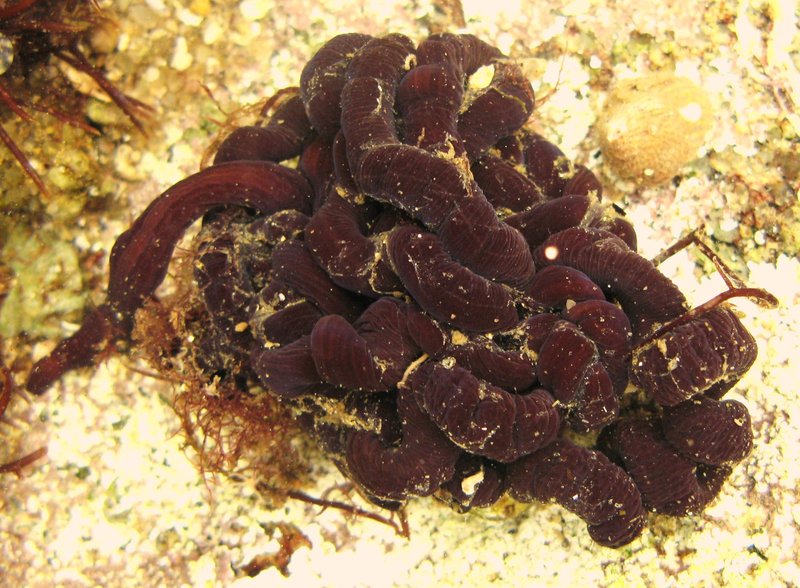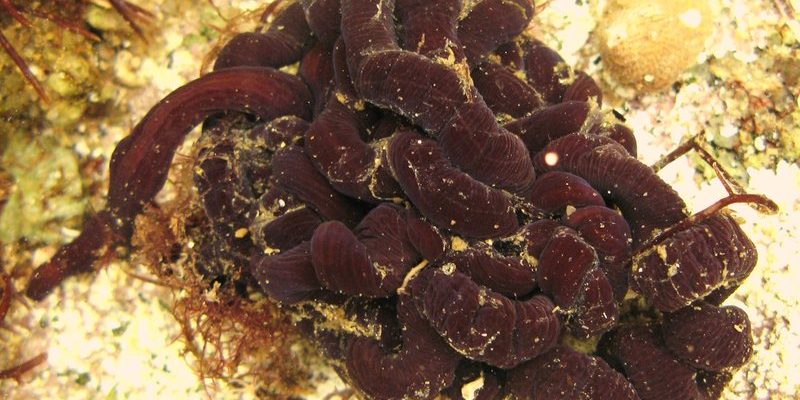
Think of bootlace worms as the quiet giants of the ocean. They inhabit the waters around the coasts of the UK and Ireland, lying hidden beneath the sand or deep within the sea. Sometimes they even resemble a jumbled mess of colorful ribbon. Their striking appearance and impressive length make them a unique subject of study for researchers and enthusiasts alike. So, grab your metaphorical snorkel, and let’s explore what makes these invertebrates so intriguing!
What Are Bootlace Worms?
Bootlace worms, scientifically known as *Lineus longissimus*, belong to the phylum Nemertea, commonly known as ribbon worms. These creatures are primarily found along the coastal regions of Europe and in some parts of North America. If you were to encounter one, you’d see a long, soft-bodied creature that can change its color and size depending on its environment. It’s like a living ribbon weaving through its habitat.
Their body is made up of a head, a trunk, and a tail. The trunk is often the most impressive part, with some specimens reported to reach lengths of over 55 meters! To put that into perspective, that’s about the length of a blue whale tongue. Just imagine spotting one of these in the wild; it would certainly be a sight to remember!
Habitat and Distribution
Bootlace worms are typically found in shallow marine environments, particularly in sandy or muddy substrates. They prefer temperate waters, which is why you can often find them in places like the British Isles and parts of the North Atlantic. They thrive in areas with low water movement, allowing them to burrow into the substrate and hide from potential predators.
One of the fascinating aspects of bootlace worms is their adaptability. They can often be found at varying depths, which means they can withstand changes in their environment. This flexibility allows them to live comfortably among corals, rocks, and even shipwrecks. It’s like having a cozy home wherever they choose to wiggle into!
Physical Characteristics
Bootlace worms are known for their unique physical characteristics. They have a soft, elongated body that allows them to glide effortlessly through their environment. Their color can range from shades of brown to bright orange, often adorned with stripes or patterns that help them blend in with their surroundings. This camouflage is crucial for avoiding predators.
One notable feature is their proboscis, a specialized feeding structure that allows them to capture prey. When threatened, bootlace worms can also evert this proboscis, which can be quite dramatic. Imagine a colorful, gooey extension shooting out to snag unsuspecting prey—it’s both fascinating and a little alarming!
Diet and Feeding Behavior
So, what do bootlace worms eat? They primarily consume small marine organisms, such as tiny crustaceans and other invertebrates. Their feeding method is quite intriguing. When they sense potential prey, they extend their proboscis quickly, capturing the meal with a sticky secretion. It’s like having a built-in fishing line—they don’t need to chase after their food!
This feeding strategy is particularly effective in their sandy or muddy habitats, where food can be scarce. By being patient and strategic, bootlace worms have found a successful way to thrive in their environment. Honestly, it’s a brilliant adaptation that showcases the wonders of nature.
Reproduction and Life Cycle
Bootlace worms have quite a unique way of reproducing. They can reproduce both sexually and asexually, depending on environmental conditions. When conditions are favorable, they engage in sexual reproduction by releasing eggs and sperm into the water. After fertilization, the eggs hatch into larvae, which eventually settle into their new environment and begin the life cycle anew.
When environmental conditions are less than ideal, bootlace worms can reproduce asexually. They do this by fragmenting their bodies into multiple pieces, each of which can grow into a new worm. It’s like a magical trick where one worm turns into multiple! This flexibility helps them adapt to challenging situations, ensuring their survival even in tough times.
Threats and Conservation
While bootlace worms are fascinating creatures, they also face certain threats. Habitat destruction, pollution, and climate change pose significant risks to their populations. Coastal development can lead to habitat loss, while pollution can disrupt their delicate ecosystem. As temperatures rise, their habitats may also change, affecting their distribution.
Conservation efforts are crucial in ensuring that bootlace worms, along with their ecosystems, are protected. By raising awareness and advocating for cleaner oceans, we can help maintain the delicate balance of marine life. It’s essential to remember that every species, no matter how small, plays a part in the larger ecosystem.
Fun Facts About Bootlace Worms
Bootlace worms are full of surprises! Here are a few fun facts that might intrigue you:
- Length Record: The bootlace worm holds the title for one of the longest animals in the world, reaching lengths that can rival a blue whale!
- Color Change: They can change color based on their environment, helping them camouflage against predators.
- Regeneration: If a bootlace worm loses a piece of its body, it can regenerate and grow back, making it one of the masters of recovery.
These quirky attributes make bootlace worms not only interesting but also vital to the marine ecosystem.
Bootlace worms might be slender and unassuming at first glance, but they’re extraordinary creatures hiding beneath the waves. From their impressive lengths and colorful bodies to their unique feeding strategies and adaptable lifestyles, they remind us of the wonders of nature. As we learn more about these invertebrates, we can better appreciate the importance of preserving their habitats and the delicate balance of marine ecosystems.
Remember, the ocean is full of surprises, and the bootlace worm is just one of many fascinating secrets waiting to be discovered. So, next time you’re near the coast, take a moment to think about the hidden wonders lurking beneath the surface. Who knows what other intriguing creatures are out there, just waiting for their story to be told?

